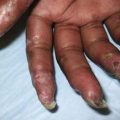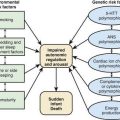Chapter 3 Ethics in Pediatric Care
Assent and Parental Permission
Older children or adolescents may have the cognitive and emotional capacity to fully participate in health care decisions. If so, the adolescent should be provided with the same information as would be given to an adult patient. In cases like this, the patient may be able to provide informed consent ethically but not legally. The adolescent’s parent(s) remain in a guiding and protective role. The process of communication and negotiation will be more complex should disagreement arise between the parent and adolescent (see Adolescent Health Care).
Treatment of Critically Ill Children
Transitioning the Goals of Care
Experts recognize that good medical care involves providing for communication, symptom management, and a range of supportive services from the onset of acute illness. In this way, if in spite of aggressive therapies an illness proves to be life-limiting, the elements of palliative care are already in place. This concept has had difficulty gaining traction, especially in critical care settings, because of the mistaken conflation of broadly defined palliative measures with hospice care. Palliative care interventions focus on the relief of symptoms and conditions that may detract from quality of life regardless of the impact on a child’s underlying disease process, and as such are important whether care is focused on cure or on transitioning to end-of-life care (Chapter 40). Some interventions regarded as life-sustaining, such as chemotherapy, may be ethically acceptable in the end-of-life setting if their use decreases pain and suffering rather than results only in prolonging death.
Declaring Death and Organ Donation
Death by Neurologic Criteria
Death by neurologic criteria (DBNC, commonly referred to as “brain death”) may be difficult for families to understand when the child appears to be breathing (albeit on a ventilator), pink, and warm to the touch, and when language such as “life support” is used at the bedside by staff. Studies have also documented clinician misunderstanding of the diagnosis of DBNC. For these reasons, strict criteria adhering to nationally accepted guidelines must be used to determine when irreversible cessation of brain and brainstem function has occurred, and to adequately document these findings (Chapter 63.1). Because the response to severe neurologic injury in the immature brain may differ from that of the mature brain, currently established guidelines require a longer period of observation of infants and younger children compared to older children or adolescents. The period of observation may be shortened through the use of a confirmatory test such as a cerebral perfusion study (demonstrating absent blood flow to the whole brain).
Newborn Screening And Genetic Testing
The Oxford Dictionary of Public Health defines screening as “the identification of a previously unrecognized disease or disease precursor, using procedures or tests that can be conducted rapidly and economically on large numbers of people with the aim of sorting them into those who may have the condition(s)…and those who are free from evidence of the condition(s).” Several programs, such as newborn screening for inborn errors of metabolism (Chapter 78; e.g., phenylketonuria [PKU] and hypothyroidism), are rightly counted among the triumphs of contemporary pediatrics. The success of such programs sometimes obscures serious ethical issues that continue to arise in proposals to screen for other conditions for which the benefits, risks, and costs have not been clearly established. Advances in genetics and technology have led to exponential growth in the number of conditions for which screening programs might be considered, with insufficient opportunity to study each proposed testing program.
Adolescent Health Care
Adolescent Assent and Consent
Many adolescents resemble adults more than they do children in their capacity to understand health care issues and to relate them to their life goals (Chapter 104). Teenagers may lack legally defined competency, yet they may have developed the capacity meet the elements of informed consent. There are also public health reasons for allowing adolescents to consent to their own health care with regard to reproductive decisions, such as contraception, abortion, and treatment of sexually transmitted infections. Strict requirements for parental permission may deter adolescents from seeking health care, with serious implications for their health and other community interests.
American Academy of Pediatrics, Committee on Bioethics. Religious objections to medical care. Pediatrics. 1997;99:279-281. Reaffirmed February 1, 2007
American Academy of Pediatrics, Committee on Bioethics. Ethics and the care of critically ill infants and children. Pediatrics. 1996;98:149-152.
American Academy of Pediatrics, Committee on Bioethics. Informed consent, parental permission, and assent in pediatric practice. Pediatrics. 1995;95:314-317. Reaffirmed February 1, 2007
American Academy of Pediatrics, Committee on Bioethics and Committee on Hospital Care. Palliative care for children. Pediatrics. 2000;106:351-357. Reaffirmed February 1, 2007
American Academy of Pediatrics, Committee on Child Health Financing. Policy statement—principles of health care financing. Pediatrics. 2010;126:1018-1021.
American Academy of Pediatrics, Committee on Fetus and Newborn. Noninitiation or withdrawal of intensive care for high-risk newborns. Pediatrics. 2007;119(2):401-403.
American Academy of Pediatrics, Council on School Health and Committee on Bioethics. Policy statement—honoring do-not-attempt-resuscitation requests in schools. Pediatrics. 2010;125:1073-1077.
Antommaria AH, Trotochaud K, Kinlaw K, et al. Policies on donation after cardiac death at children’s hospitals: a mixed-methods analysis of variation. JAMA. 2009;301:1902-1908.
Annas GJ. Extremely preterm birth and parental authority to refuse treatment—the case of Sidney Miller. N Engl J Med. 2004;351(20):2118-2123.
Block SD, Billings AJ. Learning from the dying. N Engl J Med. 2005;353:1313-1315.
Brandon D, Docherty SL, Thorpe J. Infant and child deaths in acute care settings: implications for palliative care. J Palliat Med. 2007;10(4):910-918.
Brown SD, Truog RD, Johnson JA, et al. Do differences in the American Academy of Pediatrics and the American College of Obstetricians and Gynecologists position on the ethics of maternal-fetal interventions reflect subtly divergent professional sensitivities to pregnant women and fetuses? Pediatrics. 2006;117:1382-1387.
Caniza MA, Clara W, Maron G, et al. Establishment of ethical oversight of human research in El Salvador: lessons learned. Lancet Oncol. 2006;7:1027-1033.
Casarett D, Kapo J, Caplan A. Appropriate use of artificial nutrition and hydration—fundamental principles and recommendations. N Engl J Med. 2005;353(24):2607-2612.
Costeloe K. Euthanasia in neonates. Should it be available? BMJ. 2007;334:912-913.
Curlin FA, Lawrence RE, Chin MH, et al. Religion, conscience, and controversial clinical practices. N Engl J Med. 2007;356(6):593-600.
Devictor D, Latour JM, Tissières P. Forgoing life-sustaining or death-prolonging therapy in the pediatric ICU. Pediatr Clin North Am. 2008;55(3):791-804. xiii
Diekema DS. Parental refusals of medical treatment: the harm principle as threshold for state intervention. Theor Med Bioeth. 2004;25(4):243-264.
Diekema DS, Botkin JR. Clinical report—forgoing medically provided nutrition and hydration in children. Pediatrics. 2009;124:813-822.
Dorff EN. End-of-life: Jewish perspectives. Lancet. 2005;366:862-865.
Edwards SD. The Ashley treatment: a step too far, or not far enough? J Med Ethics. 2008;34(5):341-343.
Eichenwald EC, Stark AR. Management and outcomes of very low birth weight. N Engl J Med. 2008;358(16):1700-1711.
Engelhardt HTJr, Iltis AS. End-of-life: the traditional Christian view. Lancet. 2005;366:1045-1049.
Fallat ME, Deshpande JK. Section on Surgery, Anesthesia, and Pain Medicine, Committee on Bioethics: Do-not-resuscitate orders for pediatric patients who require anesthesia and surgery. Pediatrics. 2004;114:1686-1692. Reaffirmed May 1, 2009
Feinberg J. On the child’s right to an open future. In: Aiken W, LaFollette H, editors. Whose child?. Totowa, NJ: Rowman & Littlefield; 1980:124-153.
Field MJ, Behrman RE, editors. Ethical conduct of clinical research involving children. Washington, DC: National Academy Press, 2004.
Firth S. End-of-life: a Hindu view. Lancet. 2005;366:682-686.
Forbes T, Goeman E, Stark Z, et al. Discussing withdrawing and withholding of life-sustaining medical treatment in a tertiary paediatric hospital: a survey of clinician attitudes and practices. J Paediatr Child Health. 2008;44(7–8):392-398.
Freyer DR. Care of the dying adolescent: special considerations. Pediatrics. 2004;113:381-388.
Goodyear MDE, Eckenwiler LA, Ells C. Fresh thinking about the declaration of Helsinki. BMJ. 2008;337:1067-1068.
Goodyear MDE, Krieza-Jeric K, Lemmens T. The declaration of Helsinki. BMJ. 2007;335:624-626.
Gunther DF, Diekema DS. Attenuating growth in children with profound developmental disability: a new approach to an old dilemma. Arch Pediatr Adolesc Med. 2006;160(10):1013-1017.
Haward MF, Murphy RO, Lorenz JM. Message framing and perinatal decisions. Pediatrics. 2008;122(1):109-118.
Hentschel R, Lindner K, Krueger M, et al. Restriction of ongoing intensive care in neonates: a prospective study. Pediatrics. 2006;118(2):563-569.
Himelstein BP. Palliative care for infants, children, adolescents, and their families. J Palliat Med. 2006;9(1):163-181.
Johnson MRD. End of life care in ethnic minorities. BMJ. 2009;338:489-490.
Kesselheim JC, Johnson J, Joffe S. Pediatricians’ reports of their education in ethics. Arch Pediatr Adolesc Med. 2008;162(4):368-373.
Keown D. End of life: the Buddhist view. Lancet. 2005;366:952-955.
Kimberly MB, Forte AL, Carroll JM, et al. Pediatric do-not-attempt-resuscitation orders and public schools: a national assessment of policies and laws. Am J Bioeth. 2005;5(1):59-65.
Kodish E, editor. Ethics and research with children: a case-based approach. New York: Oxford University Press, 2005.
Kodish E. Paediatric ethics: a repudiation of the Groningen protocol. Lancet. 2008;371(9616):892-893.
Kon AA. Answering the question: “Doctor, if this were your child, what would you do?”. Pediatrics. 2006;118(1):393-397.
Kopelman LM. Are the 21-year-old Baby Doe rules misunderstood or mistaken? Pediatrics. 2005;115(3):797-802.
Lazar NM, Shemie S, Webster GC, et al. Bioethics for clinicians: 24. Brain death. CMAJ. 2001;164:833-836.
Leask K. The role of the courts in clinical decision-making. Arch Dis Child. 2005;90:1256-1258.
Liao SM, Savulescu J, Sheehan M. The Ashley Treatment: best interests, convenience, and parental decision-making. Hastings Cent Rep. 2007;37(2):16-20.
Liben S, Papadatou D, Wolfe J. Paediatric palliative care: challenges and emerging ideas. Lancet. 2008;371:852-864.
Linton JM, Feudtner C. What accounts for difference or disparities in pediatric palliative and end-of-life care? A systematic review focusing on possible multilevel mechanisms. Pediatrics. 2008;122:574-582.
Lo B, Rubenfeld G. Palliative sedation in dying patients. JAMA. 2005;294:1810-1816.
Markwell H. End-of-life: a Catholic view. Lancet. 2005;366:1132-1135.
Mathur M, Petersen L, Stadtler M, et al. Variability in pediatric brain death determination and documentation in Southern California. Pediatrics. 2008;121:988-993.
McCullough LB. Neonatal ethics at the limits of viability. Pediatrics. 2005;116(4):1019-1021.
Mercurio MR. An adolescent’s refusal of medical treatment: implications of the Abraham Cheerix case. Pediatrics. 2007;120(6):1357-1358.
Mercurio MR, Adam MB, Forman EN, et al. American Academy of Pediatrics Policy Statements on Bioethics: Summaries and commentaries: parts 1–3. Pediatr Rev. 2008;29(1):e1-e8. 29(3):e15–e22, 29(5):e28–e34
Mercurio MR, Peterec SM, Weeks B. Hypoplastic left heart syndrome, extreme prematurity, comfort care only, and the principle of justice. Pediatrics. 2008;122(1):186-189.
Morrison W, Berkowitz I. Do not attempt resuscitation orders in pediatrics. Pediatr Clin North Am. 2007;54(5):757-771. xi–xii
Msall ME. The limits of viability and the uncertainty of neuroprotection: challenges in optimizing outcomes in extreme prematurity. Pediatrics. 2007;119:158-160.
Nelson RM, Botkjin JR, Kodish ED, et al. Committee on Bioethics: ethical issues with genetic testing in pediatrics. Pediatrics. 2001;107:1451-1455. Reaffirmed May 1, 2009
Partridge JC, Sendowski MD, Drey EA, et al. Resuscitation of likely nonviable newborns: would neonatology practices in California change if the Born-Alive Infants Protection Act were enforced? Pediatrics. 2009;123(4):1088-1094.
Persad G, Wertheimer A, Emanuel EJ. Principles for allocation of scare medical interventions. Lancet. 2009;373:423-431.
Pousset G, Bilsen J, Cohen J, et al. Medical end-of-life decisions in children in Flanders, Belgium. Arch Pediatr Adolesc Med. 2010;164:547-552.
Powner DJ. Certification of brain death: take care. Lancet. 2009;373:1587-1588.
President’s Council on Bioethics (U.S.). The changing moral focus of newborn screening: an ethical analysis by the President’s Council on Bioethics. Washington, DC: President’s Council on Bioethics; 2008.
Ramnarayan P, Craig F, Petros A, et al. Characteristics of deaths occurring in hospitalized children: changing trends. J Med Ethics. 2007;33:255-260.
Shannon SE, Savage TA. The Ashley treatment: two viewpoints. Pediatr Nurs. 2007;33(2):175-178.
Solomon MZ, Sellers DE, Heller KS, et al. New and lingering controversies in pediatric end-of-life care. Pediatrics. 2005;116:872-883.
Sykes NP. Morphine kills the pain, not the patient. Lancet. 2007;369:1325-1326.
Truog RD, Christ G, Browning DM, et al. Sudden traumatic death in children. JAMA. 2006;295:2646-2654.
Truog RD, Meyer EC, Burns JP. Toward interventions to improve end-of-life care in the pediatric intensive care unit. Crit Care Med. 2006;34(Suppl 11):S373-S379.
Verhagen E, Sauer PJJ. The Groningen protocol—euthanasia in severely ill newborns. N Engl J Med. 2005;352(10):959-962.
Woolley S. Children of Jehovah’s Witnesses and adolescent Jehovah’s Witnesses: what are their rights? Arch Dis Child. 2005;90:715-719.







